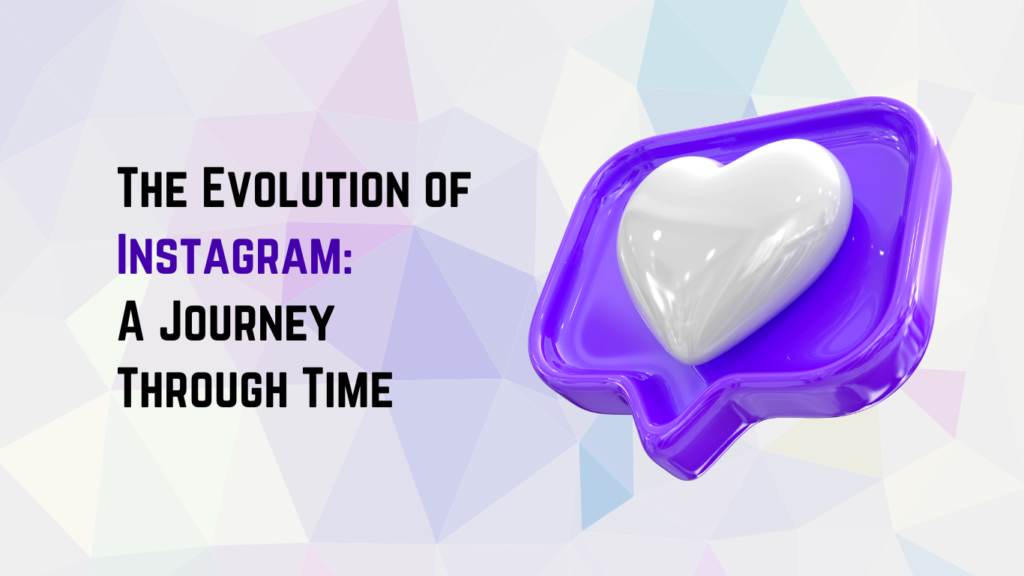
Instagram, one of the most influential social media platforms, has transformed how we share photos and videos, connect with friends, and engage with content. From its humble origins to its current status as a worldwide sensation, Instagram’s development is a tale of creativity, flexibility, and rapid expansion. Let’s journey through time and explore the key milestones that have shaped Instagram’s remarkable success.
The Birth of Instagram
Instagram was founded by Kevin Systrom and Mike Krieger and officially launched on October 6, 2010. Initially, it was a simple photo-sharing app exclusively available on iOS. The app allowed users to take pictures, apply filters, and share them on the platform. Within the first week, Instagram garnered over 100,000 users, signaling the beginning of its rapid growth.
Early Growth and Features
The early success of Instagram can be attributed to its user-friendly interface and unique features:
- Filters: Instagram’s built-in filters allowed users to enhance their photos effortlessly. The nostalgic appeal of filters like X-Pro II, Earlybird, and Amaro became a signature feature of the app.
- Hashtags: Introduced in January 2011, hashtags made it easier for users to discover content and connect with others who shared similar interests. This feature significantly boosted user engagement and content discoverability.
Expansion and Android Launch
Recognizing the platform’s potential, Instagram expanded its reach by launching an Android version in April 2012. The Android release attracted over one million downloads in less than a day, further fueling Instagram’s growth. Shortly after, in April 2012, Facebook acquired Instagram for approximately $1 billion in cash and stock, marking a pivotal moment in the app’s history.
Introduction of Videos
In June 2013, Instagram introduced the ability to share videos, allowing users to upload 15-second clips. This feature was later extended to 60 seconds in 2016. The introduction of video content opened new avenues for creativity and engagement, making Instagram a more versatile platform.
The Rise of Stories
One of the most significant updates in Instagram’s history was the introduction of Instagram Stories in August 2016. Inspired by Snapchat, Stories allowed users to share ephemeral photos and videos that disappeared after 24 hours. This feature quickly gained popularity, with over 250 million daily active users within a year of its launch. Stories became a crucial tool for users and brands to share behind-the-scenes content, and daily updates, and engage with their audience in real-time.
Instagram Live and IGTV
Continuing its focus on video content, Instagram launched Instagram Live in November 2016, enabling users to broadcast live videos to their followers. This feature facilitated real-time interaction and provided a new way for users to connect with their audience.
In June 2018, Instagram introduced IGTV, a standalone app for long-form videos. IGTV allowed users to upload videos up to 60 minutes long, catering to the growing demand for video content and providing a platform for creators to share more in-depth and engaging videos.
Expanding E-Commerce Capabilities
Instagram recognized the potential of e-commerce and introduced several features to facilitate online shopping:
- Shoppable Posts: In 2018, Instagram introduced shoppable posts, allowing users to purchase products directly from the app. Brands could tag products in their posts, making it easier for users to explore and buy items.
- Checkout Feature: Launched in 2019, the checkout feature enabled users to complete purchases without leaving the app. This seamless shopping experience further solidified Instagram’s role in the e-commerce landscape.
The Launch of Reels
In response to the growing popularity of short-form video content, Instagram launched Reels in August 2020. Reels allowed users to create and share 15-second multi-clip videos with various editing tools and audio options. This feature was seen as Instagram’s answer to TikTok and quickly gained traction among users and creators.
The Future of Instagram
As Instagram continues to evolve, it remains focused on enhancing user experience, fostering creativity, and driving engagement. The platform is constantly exploring new features and improvements to stay relevant in the ever-changing social media landscape. With advancements in artificial intelligence, augmented reality, and e-commerce, Instagram is poised to remain a dominant force in the world of social media.
Conclusion
From a simple photo-sharing app to a global social media powerhouse, Instagram’s journey through time is a testament to its ability to innovate and adapt. By introducing new features, expanding its capabilities, and staying attuned to user needs, Instagram has transformed the way we connect, share, and engage with content. As it continues to grow and evolve, Instagram will undoubtedly remain a central hub for visual storytelling and digital interaction.



